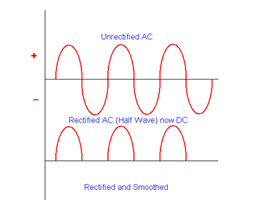The THX logo may be seen on surround processors, amplifiers, and speakers. This logo means several things: (1) The components meet certain high standards for home theater performance, which in the case of A/V Receivers and Surround Sound Processors includes strict requirements for electrical levels, output power, and impedances which ensures maximum headroom, minimum noise, and a consistent performance across the entire playback chain; (2) Products must include certain design features and functions (some of which are proprietary to THX). The goal of the THX certification program is two-fold: A) to come up with products that will translate the standards based movie soundtrack into what you were meant to hear; and B) that said products will all work perfectly together.
Specific to surround sound decoders are the THX “Post Processes”:
Timbre Matching alters the sound of the surround channels, accounting for the fact that sources behind us sound different from those in front. By making the surrounds sound more like the fronts, a more seamless sound space is created.
Adaptive Decorrelation was originally created in the hey-day of Pro Logic. It prevents the mono surround channel from sounding mono by subtly altering the time and phase of the two surround speakers. Because 5.1 soundtracks can contain mono surround information at times, the circuit adaptively kicks in only as appropriate on such material.
Re-Equalization applies a specific roll-off of high frequency information to address the fact that home theaters reflect and sustain high frequency energy much more than a properly configured mix facility or movie theater. Without Re-EQ, we are compelled to turn down the volume in response to the uncomfortable treble, thereby missing the more subtle elements of the soundtrack.
Bass-Management, now standard on most surround sound processors, is something THX mandated way back when. The crossover frequency (the frequency above which the sound goes to the main speakers and below which the sound goes to the subwoofer) and slopes (how steep the change is above and below the crossover frequency, expressed in dB per octave) for THX’s bass management are very specific. It is comprised of a 4th order (24 dB/octave) low pass (80 Hz) to the subwoofer and a 2nd order (12 dB/octave) high pass to any main channel set as “Small”. The mismatch of slopes is in anticipation of THX main speakers which exhibit their own 2nd order roll-off (2nd order + 2nd order = 4th order).
Time Alignment of the channels is something which is now somewhat common place, but which THX mandated early on. This consists of setting the speaker distances in the processor or receiver’s menu so it will delay the sound to a speaker closer to you more than it delays the sound from a speaker farther away from you. This results in the sound reaching your ears in an appropriate time frame from all speakers.
THX Ultra2 Cinema/Music/Game is THX’s own effort at a surround sound decoding scheme which can take a 5.1 soundtrack and turn it into 7.1 (found only on THX Ultra2 products and not on the original Ultra or Select product).
At one time, THX products came with a tremendous premium in their price, but that is clearly no longer the case. THX Select A/V Receivers are available for well under $1,000 and virtually all good Surround Sound Preamps are THX Ultra or Ultra2 certified. With this in mind, and the fact that being THX certified cannot possibly hurt, a THX-certified A/V Receiver or Processor should be on your short list when shopping.


